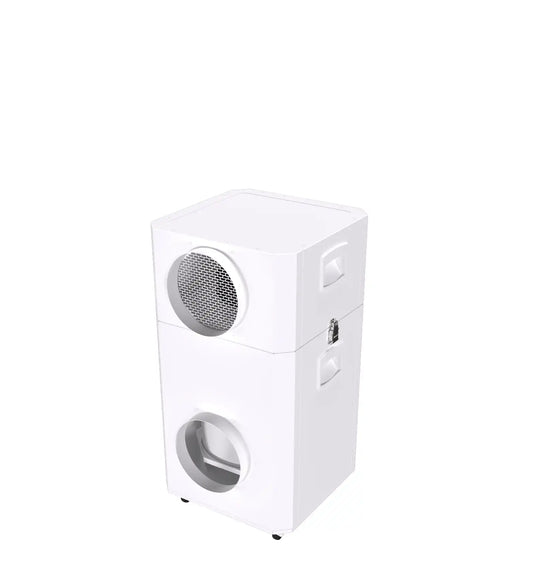Could living near a main road be impacting your health?

Air pollution from motor vehicles kills more people in Australia each year than our national road toll and is a major contributor to a range of adverse health effects.
There is a huge lack of awareness about the impact of road traffic pollution, which plagues, Sydney, Melbourne, and most major cities in Australia is having on our health.
The NSW Government has admitted that air pollution kills more people in Sydney each year than car accidents, according to a submission by the Asthma Foundation to the 2013 Senate Inquiry on Health Effects of Air Quality in Australia.
More than 1,700 Australians lose their lives each year due to air pollution from motor vehicles, with 650 deaths in NSW alone, according to a report by the Electric Vehicle Council [Cleaner and safer roads for NSW], while 1,100 people lost their lives in the calendar year to July 2019. It also costs our economy $8 billion per year according to the Australian Medical Association.
Two-thirds of Australians live in a capital city, with many living near major roadways and being exposed to high levels of vehicle emissions with little understanding of the health impacts.
Petrol and diesel fumes are believed to be the most health-hazardous air pollutant, responsible for 10 to 20 times as many premature deaths as the next worst pollutant, ozone. The estimated health cost of a kilogram of this type of emission in Sydney is $235.
Diesel is classified as a Group 1 carcinogen by the World Health Organisation’s International Agency for Research on Cancer. It is ranked alongside smoking, asbestos and UV radiation in terms of cancer risks, based on extensive evidence that exposure is associated with increased risk of lung cancer.
While there is a growing trend in major global cities to build tunnels instead of open roads to protect residents in densely populated areas, the health impacts of motor vehicle pollution are not being considered in the planning of new motorways here in Australia. The M5 motorway in Sydney, for example, and many other motorways, pass through heavily populated areas.
According to Sydney University, motorway pollution remains at elevated levels for up to 1000 metres at night time, and several hundred metres during pre-sunrise hours, despite low traffic volumes.
The Senate inquiry found that there is no safe level of exposure when it comes to air pollution from motor vehicles, with the Environment and Sustainable Development Directorate of the Australian Capital Territory noting ‘'there is no safe threshold for particulate pollution at which health effects do not occur.'
Even at levels below current targets, the inquiry found: “further health gains can be achieved by a further reduction in pollutant levels”
Those who are particularly vulnerable to poor health due to air pollution are children, pregnant women and the elderly.
Submissions by The National Health and Medical Research Council, Australian Medical Association and Asthma Foundation to the Senate Inquiry reported that motor vehicle pollution can contribute to:
- Acute and chronic respiratory conditions such as asthma, emphysema, chronic bronchitis, upper respiratory tract infection,
- Lung disease and infection
- Compromised immunity
- Headache
- Nausea
- Dizziness
- Breathlessness
- Fatigue
- Visual disturbance
- Heart disease
- Coma
- Increased cough/phlegm production requiring medical attention
- Restrictions in physical activity
- Premature mortality
- Low birth weight and adverse neurodevelopment outcomes
- Genetic damage
- Reproductive and developmental defects
- Central nervous system defects and diseases
- Cognitive function
- Diabetes
- Increase in the incidence of cancer (including links between vehicle pollution and cervical and brain cancers).
- Increase in children’s susceptibility to allergens, including a higher risk of hay fever, which is linked to the development of asthma
What is particularly concerning about these findings is the impact on unborn children. Sydney researchers detected a link between higher pollutions levels and reduced birth weight in babies in the metropolitan area, suggesting the noxious effects of traffic fumes may cross the placenta to the developing foetus.
“Perhaps the reason Australia is so far behind most developed countries in realising that hydrocarbons are a serious health issue and implementing measures to limit them is that its air pollutions issues are not yet as acute as other parts of the world and coal is such a major export earner,” said the Asthma Foundation.
While we can’t control the air quality outside, indoors is where we spend most of our time and we can implement steps to improve the air quality in our homes.
We have thousands of customers in Australia, many of whom, coincidentally, live near main roads, so it’s fair to say the quality of the air we breathe when we are inside our homes, matters most.
A good quality air purifier with a medical-grade HEPA filter can significantly improve the air quality in your home overnight, and the positive effects accumulate with continued use. So while usage of home air purifiers is linked to higher respiratory and general health, those living within 1,000 metres of a motorway may have another major reason to consider investing in one.
If you'd like more info on selecting an air purifier that suits your personal needs, check out this video: https://inovaairpurifiers.com.au/blogs/videos/selecting-the-right-air-purifier














